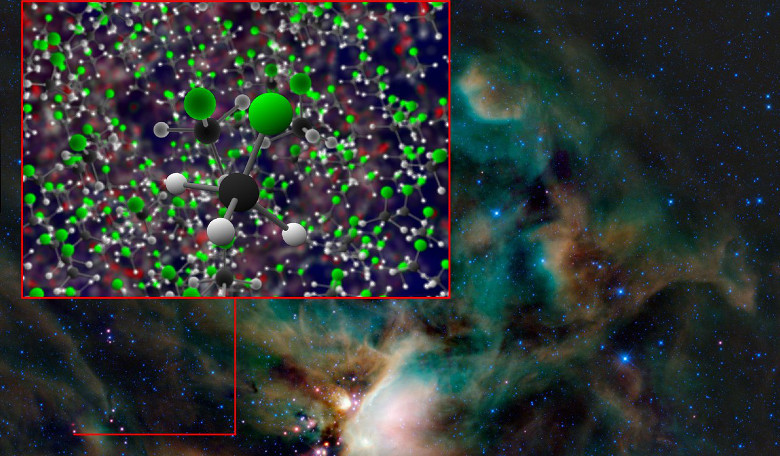A molecule formed by organic processes on Earth has been found in space for the first time, however the discovery challenges the idea that it may not be a good biomarker of life elsewhere in the Universe as had originally been thought.
The chemical compound is chloromethane (CH3Cl), also known as methyl chloride and Freon-40 and it is a type of molecule known as a organohalogen. Organic halogen compounds are chemicals that contain one or more halogens (fluorine, chlorine, bromine, or iodine) combined with carbon and other elements; the simplest of which is chloromethane.
Using data captured with the ROSINA instrument on ESA’s Rosetta mission and the Atacama Large Millimeter/submillimeter Array (ALMA) in Chile, a team of astronomers have found faint traces of the chemical compound on the famous comet 67P/Churyumov-Gerasimenko (67P/C-G) that was the target of the Rosetta mission and around an infant star about 400 light-years away in a system known as IRAS 16293-2422.
While the new ALMA observation is the first detection ever of a stable organohalogen in interstellar space, it simultaneously dashes hopes that its presence points to potential signs of life beyond our planet. On Earth chloromethane can be emitted by tropical plants and peat bogs, but this recent discovery shows that the compound can also form abiotically, I.e that it forms in the absence of living organisms.
“ALMA’s discovery of organohalogens in the interstellar medium also tells us something about the starting conditions for organic chemistry on planets. Such chemistry is an important step toward the origins of life,” said Karin Öberg, a co-author on the study. “Based on our discovery, organohalogens are likely to be a constituent of the so-called ‘primordial soup’, both on the young Earth and on nascent rocky exoplanets.”
The discovery could however, have implications for chemistry on Earth. As chloromethane seemingly forms efficiently under pre-planetary conditions, it can survive the formation of a planetary system and be incorporated in comets. The team, whose lead author is Edith Fayolle from the Harvard-Smithsonian Center for Astrophysics, Cambridge, Massachusetts, have calculated that comets like 67P could have delivered up to 50 gigatonnes of chlorine by way of meteorite impact in our planet’s early history.
“Finding the organohalogen Freon-40 near these young, Sun-like stars was surprising,” said Fayolle. “We simply didn't predict its formation and were surprised to find it in such significant concentrations. It’s clear now that these molecules form readily in stellar nurseries, providing insights into the chemical evolution of planetary systems, including our own.”
Indeed this may be the case as Fayolle and team found similar abundances of different isotopes of chlorine in both the infant star system and the comet, which suggests that a young planetary system can inherit the chemical composition of its parent star-forming cloud. Accordingly this further supports the idea that organohalogens could arrive on planets in young systems during planet formation or via comet impacts.
The team also hint that another organohalogen, fluoromethane (CH3F), might also be present in IRAS 16293-2422 implying that researchers still have more to learn about the formation of organohalogens. “Additional searches for organohalogens around other protostars and comets need to be undertaken to help find the answer,” added Fayolle.











